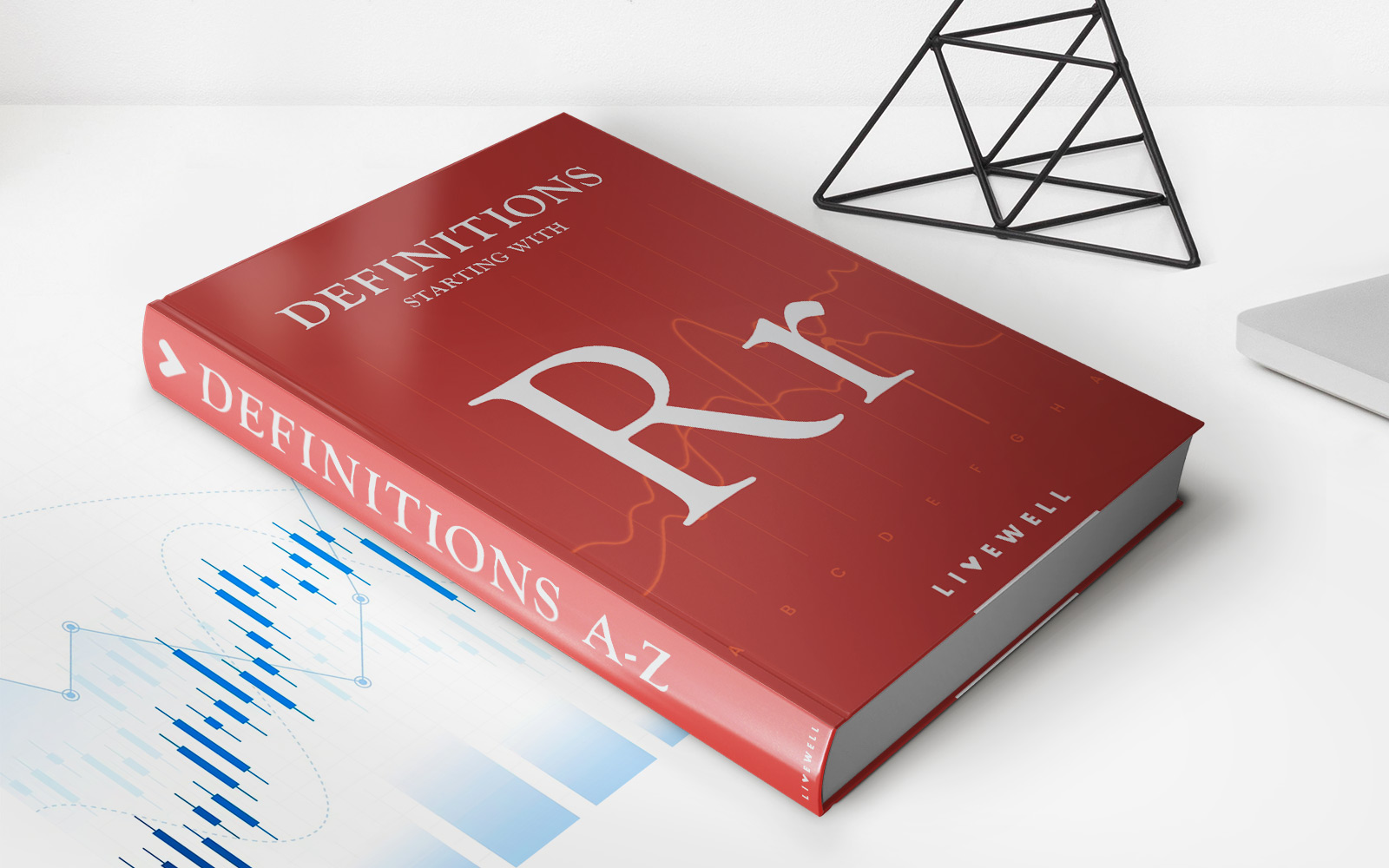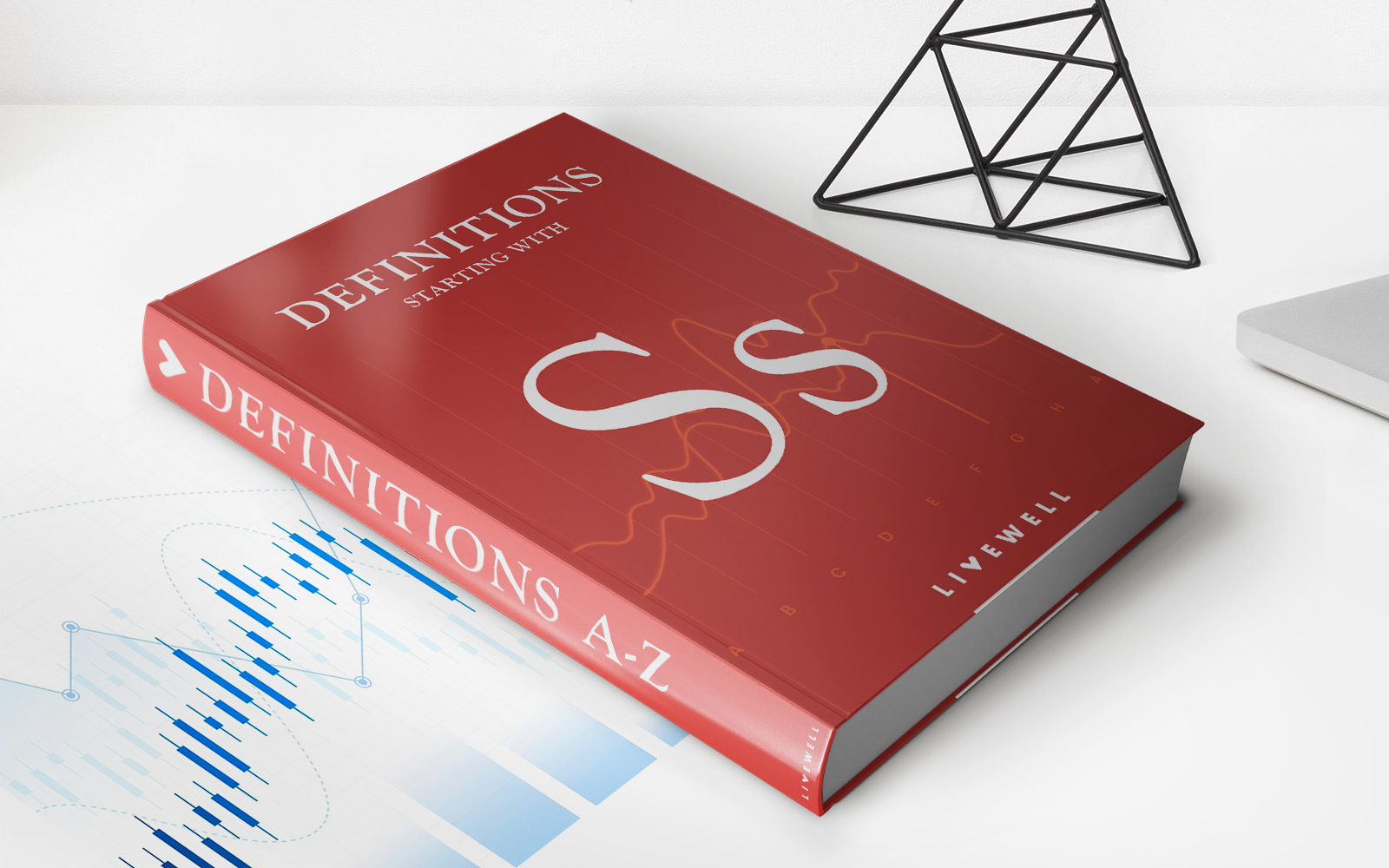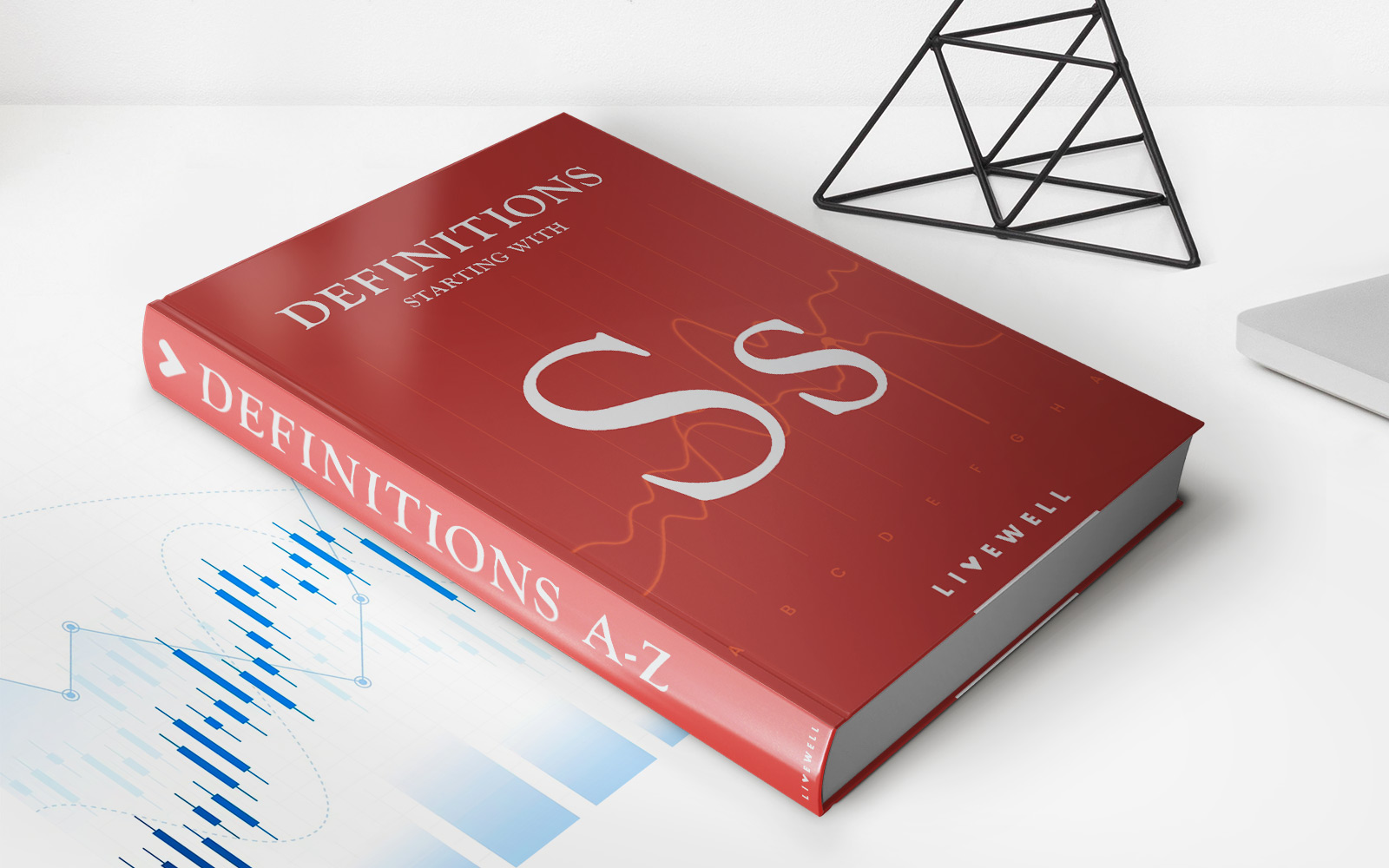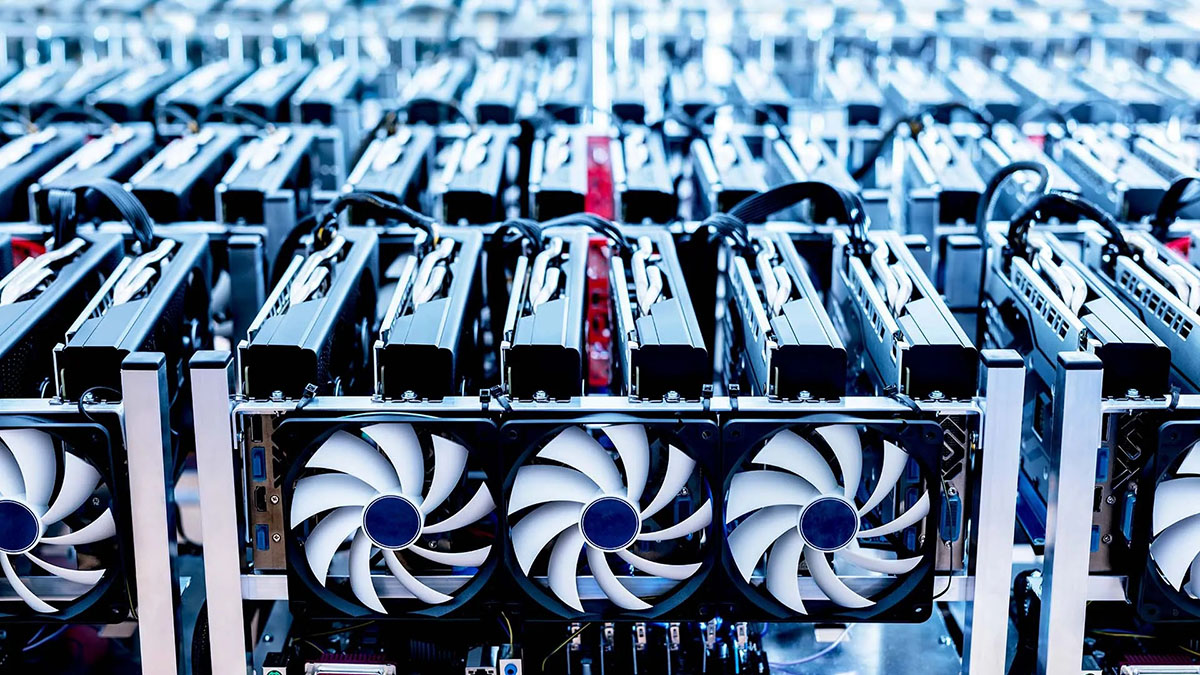Home>Finance>What Is The Difference Between Real GDP And Nominal GDP?


Finance
What Is The Difference Between Real GDP And Nominal GDP?
Modified: December 30, 2023
Learn the distinction between real GDP and nominal GDP in the field of finance. Understand how they differ and the implications they have on economic analysis.
(Many of the links in this article redirect to a specific reviewed product. Your purchase of these products through affiliate links helps to generate commission for LiveWell, at no extra cost. Learn more)
Table of Contents
Introduction
Understanding the concepts of real GDP and nominal GDP is essential for anyone interested in economics or finance. GDP, or Gross Domestic Product, is a key measure of a country’s economic performance. It represents the total value of all goods and services produced within a country’s borders during a specific period.
When analyzing GDP, it is important to distinguish between real GDP and nominal GDP. Real GDP measures the value of goods and services produced in constant prices, adjusted for inflation or deflation. On the other hand, nominal GDP measures GDP in current prices, without adjusting for changes in price levels over time.
Both real GDP and nominal GDP provide valuable insights into a nation’s economic activity, but they differ in how they account for changes in prices. This article will delve into the definitions of real GDP and nominal GDP, highlight their key differences, discuss factors affecting their calculations, explain their importance, and outline their limitations.
By the end of this article, you will have a solid understanding of the distinction between real GDP and nominal GDP, and their respective significance in economic analysis.
Definition of Real GDP
Real GDP, or Real Gross Domestic Product, is a measure of a country’s economic output that takes into account changes in price levels over time. It reflects the total value of all goods and services produced within a country’s borders, adjusted for inflation or deflation. Real GDP provides a more accurate measure of economic growth by accounting for changes in purchasing power.
To calculate real GDP, economists use a base year as a benchmark for comparing prices across different time periods. The base year represents a period of stable prices, allowing for a consistent measurement of output. The real GDP calculation involves adjusting the current prices of goods and services to reflect the prices of the base year.
The formula for calculating real GDP involves multiplying the quantity of each good and service produced in the current year by its corresponding price in the base year. By using the prices from the base year, economists can isolate the changes in output, rather than changes in prices, when assessing economic growth.
Real GDP is often expressed in real terms, meaning it is adjusted for inflation. By removing the effects of inflation, real GDP provides a better indication of changes in economic activity. It allows for meaningful comparisons of GDP across different time periods and provides insights into the true growth or contraction of an economy.
Real GDP is a crucial indicator for policymakers, businesses, and financial institutions as it helps in assessing the overall health and performance of an economy. It enables economists to analyze economic trends, make predictions, and devise appropriate policies to promote stable economic growth.
Definition of Nominal GDP
Nominal GDP, or Nominal Gross Domestic Product, is a measure of a country’s economic output that does not consider changes in price levels over time. It represents the total value of all goods and services produced within a country’s borders, using current market prices. Nominal GDP reflects the actual value of economic activity in terms of the prevailing prices at the time.
To calculate nominal GDP, economists use the current prices of goods and services produced during a specific period. Unlike real GDP, nominal GDP does not adjust for inflation or deflation. It provides a snapshot of the current economic activity without accounting for changes in purchasing power caused by price level fluctuations.
The formula for calculating nominal GDP involves multiplying the quantity of each good and service produced in the current year by its corresponding current price. This calculation reflects the actual dollar value of economic output based on prevailing market prices.
Nominal GDP is a useful measure for comparing the economic performance of different countries or regions at a specific point in time. It allows for direct comparisons of the total value of economic activity without the need for adjusting for varying price levels. However, it should be noted that nominal GDP does not provide an accurate representation of economic growth when price levels are fluctuating significantly.
Nominal GDP can be affected by factors such as changes in consumer spending, government expenditure, investment levels, and international trade. It provides policymakers, investors, and businesses with insights into the current state of the economy and can be used to make comparisons across different time periods to track changes in economic activity.
While nominal GDP provides valuable information about the size of an economy, it is important to consider its limitations when analyzing economic trends. Without accounting for changes in price levels, nominal GDP may not accurately reflect changes in the purchasing power of consumers or the real growth of an economy. Therefore, it is often used in conjunction with real GDP to provide a more comprehensive understanding of economic performance.
Key Differences between Real and Nominal GDP
Real GDP and nominal GDP differ in how they account for changes in price levels over time. Understanding the key differences between these two measures is crucial for obtaining an accurate picture of an economy’s performance. Here are the main distinctions:
- Adjustment for price changes: The most significant difference between real GDP and nominal GDP lies in how they handle changes in prices. Real GDP adjusts for inflation or deflation by using a base year as a benchmark for comparing prices. On the other hand, nominal GDP does not make these adjustments and reflects the current market prices of goods and services.
- Comparability across time periods: Real GDP allows for meaningful comparisons of economic output across different time periods. By adjusting for changes in price levels, it isolates the changes in output, providing insights into the true growth or contraction of an economy. Nominal GDP, on the other hand, reflects the actual value of economic activity in current prices and may not accurately capture changes in output over time.
- Measurement of economic growth: Real GDP is often used to measure economic growth over time. By factoring out the effects of inflation, it provides a more accurate representation of the changes in the quantity of goods and services produced. Nominal GDP, on the other hand, may be influenced by changes in price levels, leading to an overestimation or underestimation of economic growth.
- Accounting for changes in purchasing power: Real GDP takes into account changes in purchasing power by adjusting for inflation or deflation. It provides a better understanding of the actual changes in economic activity and the ability of consumers to buy goods and services. Nominal GDP, however, does not consider changes in purchasing power and reflects the current market prices, which may not accurately represent changes in consumers’ purchasing ability.
- Policy implications: Real GDP is a crucial indicator for policymakers as it helps them assess the true performance of an economy and formulate appropriate policies. It allows policymakers to differentiate between changes in prices and changes in economic output. Nominal GDP, on the other hand, may not provide a clear picture of economic conditions, making it less reliable for policy analysis.
Overall, while nominal GDP provides a snapshot of the current value of economic activity, real GDP offers a more accurate measure of economic growth and allows for meaningful comparisons across time periods. Both measures provide valuable insights, but it’s important to understand the differences between them to make informed interpretations of economic data.
Factors Affecting Real and Nominal GDP
Both real GDP and nominal GDP are influenced by various factors that can impact the overall level of economic output. Understanding these factors is crucial for analyzing changes in GDP and determining the drivers behind economic growth or contraction. Here are some key factors that affect both real and nominal GDP:
- Inflation or Deflation: Changes in the overall price level, measured by the inflation rate, can significantly affect both real and nominal GDP. Rising prices, or inflation, can decrease the purchasing power of consumers, leading to a reduction in real GDP. In contrast, falling prices, or deflation, may increase the purchasing power of consumers and contribute to an increase in real GDP.
- Changes in Consumer Spending: Consumer spending is a major driver of economic activity and has a direct impact on both real and nominal GDP. When consumers increase their spending on goods and services, it leads to higher GDP figures. Changes in consumer confidence, income levels, interest rates, and government policies can influence consumer spending patterns and, consequently, affect GDP.
- Government Expenditure: Government spending also plays a significant role in shaping GDP. Increases in government expenditures, such as investments in infrastructure, healthcare, education, and defense, can contribute to GDP growth. Conversely, reductions in government spending can lead to a decrease in GDP figures.
- Investment Levels: Changes in business investment, including spending on capital goods and infrastructure, can impact both real and nominal GDP. Increases in investment expenditures typically indicate economic growth and contribute to higher GDP figures. Conversely, decreases in investment can lead to a contraction in GDP.
- Net Exports: The difference between exports and imports, known as net exports, also influences GDP. Increases in exports contribute positively to GDP, while increases in imports have a negative impact. Factors such as changes in exchange rates, global demand for goods and services, and trade policies can influence net exports and, consequently, affect GDP figures.
- Technological Advancements: Technological advancements and innovation can have a profound impact on economic output. The adoption of new technologies and productivity-enhancing tools can increase the efficiency and productivity of businesses, leading to higher levels of GDP.
These are just a few examples of the many factors that can affect both real and nominal GDP. It is important to note that while these factors influence the overall level of GDP, the extent of their impact may vary depending on the specific economic context of a country or region.
Importance of Real and Nominal GDP
Both real GDP and nominal GDP play crucial roles in understanding and analyzing an economy’s performance. They provide valuable insights into the level of economic activity, growth trends, and the overall health of an economy. Here are some key reasons why real and nominal GDP are important:
1. Measure of Economic Activity: Real and nominal GDP serve as key indicators of the level of economic activity within a country. They provide a comprehensive assessment of the total value of goods and services produced, reflecting the overall size of the economy.
2. Comparison of Economic Performance: Real and nominal GDP allow for comparisons of economic performance across different time periods or between different countries. Real GDP, in particular, provides a more accurate measurement that accounts for changes in price levels, enabling meaningful comparisons of economic growth and contraction.
3. Assessing Economic Growth: Real GDP is commonly used to measure economic growth over time. By adjusting for inflation or deflation, it provides a clearer picture of changes in the quantity of goods and services produced, indicating the true growth or contraction of an economy. This information is crucial for policymakers, investors, and businesses to track economic trends and make informed decisions.
4. Policy Formulation: Real and nominal GDP are important tools for policymakers to formulate appropriate economic policies. They provide insights into the overall health of an economy and help policymakers identify areas that require attention or intervention. By understanding the current economic conditions as measured by GDP, policymakers can adjust fiscal and monetary policies to promote stability and achieve desirable economic outcomes.
5. Investment Decisions: Investors and businesses often rely on GDP figures, both real and nominal, when making investment decisions. GDP data helps them assess the economic climate and growth potential of a country or region, providing useful information for allocating resources and identifying investment opportunities.
6. Monitoring Standard of Living: Changes in real GDP per capita, which measures GDP per person, are often used as indicators of changes in the standard of living. Increasing real GDP per capita generally indicates improved living standards, as it suggests that there is a greater availability of goods and services per person.
In summary, real and nominal GDP are important economic indicators that provide valuable insights into the level of economic activity, growth trends, and the overall health of an economy. They offer a way to compare economic performance, assess economic growth, formulate policies, make investment decisions, and monitor changes in the standard of living. Understanding and analyzing these measures allow policymakers, investors, businesses, and individuals to make informed decisions and strategies.
Limitations of Real and Nominal GDP
While real and nominal GDP are important measures of economic activity, it is important to recognize their limitations. These limitations can affect the accuracy and reliability of GDP figures and may require additional considerations when interpreting and analyzing the data. Here are some key limitations of real and nominal GDP:
1. Price Level Changes: Both real and nominal GDP calculations can be affected by changes in price levels. Inflation or deflation can distort the value of GDP and make it more challenging to accurately compare GDP figures over time. Price level changes can also impact consumers’ purchasing power and the actual value of economic output.
2. Quality of Goods and Services: GDP calculations do not take into account the quality of goods and services produced. Changes in the quality of products over time, such as technological advancements, may not be reflected in GDP figures. This limitation can undermine the accuracy of GDP as a measure of economic progress.
3. Informal Economy: GDP calculations may not capture the full extent of economic activity, particularly in the case of informal or underground economies. Informal economic transactions, which involve unreported income or illegal activities, are not accounted for in official GDP measurements. This can lead to an underestimation of the true level of economic activity.
4. Nonmarket Activities: GDP primarily focuses on market-based activities and excludes nonmarket activities such as unpaid work, household production, and volunteer services. This exclusion can underestimate the overall economic contributions of these nonmarket activities and may not provide a comprehensive picture of economic well-being.
5. Income Distribution: GDP does not indicate how income is distributed within a country. It is possible to have a high GDP figure while significant income disparities exist. Thus, GDP alone may not accurately reflect the well-being of the population or the level of economic inequality within a country.
6. Environmental Impact: GDP calculations do not consider the environmental impact of economic activities. This means that economic growth measured by GDP does not account for the depletion of natural resources or the costs associated with pollution, which can lead to a distorted understanding of sustainable economic development.
7. Cultural and Social Factors: GDP does not capture intangible aspects of well-being and quality of life, such as culture, social cohesion, and happiness. These factors are crucial in assessing overall societal progress and may require additional measures beyond GDP to paint a more comprehensive picture.
While real and nominal GDP remain important indicators of economic activity, it is essential to consider these limitations when interpreting and analyzing the data. Supplementing GDP with other measures and indicators can provide a more comprehensive understanding of an economy’s performance and well-being.
Conclusion
In conclusion, real GDP and nominal GDP are essential measures that provide valuable insights into the economic activity and performance of a country. While they both aim to quantify the value of goods and services produced, they differ in the way they account for changes in price levels over time.
Real GDP adjusts for inflation or deflation, providing a more accurate measure of economic growth by isolating changes in output from changes in prices. On the other hand, nominal GDP reflects the actual value of economic activity in current prices, without adjusting for changes in price levels.
Real and nominal GDP have their own significance and uses. Real GDP allows for meaningful comparisons of economic growth across different time periods and helps policymakers formulate appropriate economic policies. Nominal GDP, on the other hand, provides a snapshot of current economic activity and is useful for direct comparisons between countries or regions.
However, it is important to consider the limitations of both measures when analyzing GDP data. Price level changes, the quality of goods and services, informal economies, nonmarket activities, income distribution, environmental impact, and cultural factors can all affect the accuracy and reliability of GDP figures.
To gain a more comprehensive understanding of an economy’s performance and well-being, it is recommended to supplement GDP with other indicators that capture important aspects such as income distribution, environmental sustainability, and quality of life.
In summary, real and nominal GDP are valuable tools for assessing economic activity and growth. Their differences and limitations should be considered when analyzing economic data to ensure a more accurate and comprehensive assessment of an economy’s performance.














